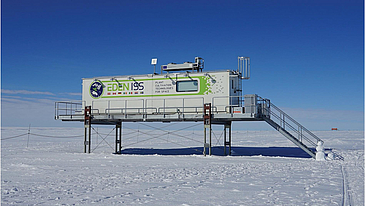Paul Zabel, Conrad Zeidler, Vincent Vrakking, Markus Dorn, Daniel Schubert
Frontiers in Plant Science 11 (2020)
doi: 10.3389/fpls.2020.00656.
The EDEN ISS greenhouse is a space-analog test facility near the German Neumayer III station in Antarctica. The facility is part of the project of the same name and was designed and built starting from March 2015 and eventually deployed in Antarctica in January 2018. The nominal operation of the greenhouse started on February 7th and continued until the 20th of November. The purpose of the facility is to enable multidisciplinary research on topics related to future plant cultivation on human space exploration missions. Research on food quality and safety, plant health monitoring, microbiology, system validation, human factors and horticultural sciences was conducted. Part of the latter is the determination of the biomass production of the different crops. The data on this topic is presented in this paper. During the first season 26 different crops were grown on the 12.5 m2 cultivation area of the greenhouse. A large number of crops were grown continuously throughout the 9 months of operation, but there were also crops that were only grown a few times for test purposes. The focus of this season was on growing lettuce, leafy greens and fresh vegetables. In total more than 268 kg of edible biomass was produced by the EDEN ISS greenhouse facility in 2018. Most of the harvest was cucumbers (67 kg), lettuces (56 kg), leafy greens (49 kg), and tomatoes (50 kg) complemented with smaller amounts of herbs (12 kg), radish (8 kg), and kohlrabi (19 kg). The environmental set points for the crops were 330–600 μmol/(m2*s) LED light, 21°C, ∼65% relative humidity, 1000 ppm and the photoperiod was 17 h per day. The overall yearly productivity of the EDEN ISS greenhouse in 2018 was 27.4 kg/m2, which is equal to 0.075 kg/(m2*d). This paper shows in detail the data on edible and inedible biomass production of each crop grown in the EDEN ISS greenhouse in Antarctica during the 2018 season.

